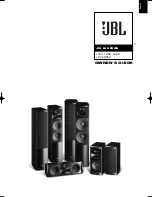
The collector loop piping, plus any intercon-
necting hot water piping shall be well insulated
with a high quality flexible closed cell insula-
tion to minimize heat loss. The insulation shall
have a maximum operating temperature of
220°F or higher. The wall thickness of the pipe
insulation should not be less than ½”. A 1” wall
thickness is required in all areas prone to annual
hard freeze conditions. When it comes to pipe
insulation the rule is simple: thicker is better.
To the extent possible, slide the insulation mate-
rial over the pipe without cutting or taping. All
butt joints must be sealed with contact adhesive.
The use of rigid polyethylene pipe insulation is
prohibited. The temperatures generated by your
collector in the summer months or under stag-
nation conditions can melt this type of material.
Any above ground exterior pipe insulation is
subject to UV degradation and must be jacket-
ed, wrapped with aluminum foil tape, or painted
with two coats of high quality water-based
acrylic resin coating as supplied by the insula-
tion manufacturer.
4.6 Control System
4.6.1 Differential Controller
The differential controller must be installed in
an accessible location so that the user inter-
face, typically an LCD screen, can be seen.
Switches on the controller must be labeled and
accessible. Always follow the controller manu-
facturers wiring instructions when installing
differential controllers. Control system inputs;
such as signals from temperature sensors or
flow meters shall be connected to the appropri-
ate low voltage terminals. Controller output to
the pump will be medium voltage, 110 VAC or
220 VAC. Medium voltage power to the pump
may be supplied by a line cord from the pump
to an outlet in the controller or hard wired from
the controller medium voltage terminals to the
pump. Wiring must comply with standard elec-
trical practice and all applicable electrical codes
for the jurisdiction having authority, this may
require the use of conduit for medium voltage
wiring.
The differential controller must have a provi-
sion to manually turn the pump on and off
(manual override) so that pump operation can
be checked at any time and the pump can be
manually stopped if required for maintenance
or troubleshooting purposes.
Set the maximum tank temperature to the
desired maximum temperature, this tempera-
ture must be lower than the rated maximum
temperature of the tank and associated compo-
nents. When the solar loop heats the tank to this
temperature, the pump will shut off preventing
further heat gains to the solar tank.
4.6.2 Collector Sensor Placement
The collector sensor shall be located on the
solar loop return line as close to the collector
as possible. Sensors are typically accurate to
+/- ½°F if properly installed and weatherized.
The collector probe sensor shall be attached to
the SunEarth collector header pipe either with
a stainless steel hose clamp or by inserting the
probe sensor into a thermal well in contact with
the fluid near the outlet header pipe.
It is recommended that the connection between
the silicon sensor lead and low voltage sensor
wiring be made inside the attic, a NEMA 4X
junction box or some other indoor space. When
using wire nuts to make the connection, the
crimped brass cap on the end of the sensor wire
should be removed and the wire striped before
inserting into the wire nut. Where connections
from the sensor lead to the low voltage wiring
is made at an exposed location the connection
should be by crimp and heat shrink or solder
and heat shrink butt connections. Wire nuts or
screw connectors should not be used in exposed
locations due to the likelihood of corrosion
which will result in a compromised electrical
connection.
Thoroughly wrap and weatherize the insulation
with electrician’s tape or insulation tape as pro-
vided by the manufacturer. See Figure 12 for
collector sensor installation detail.
P.11
















































